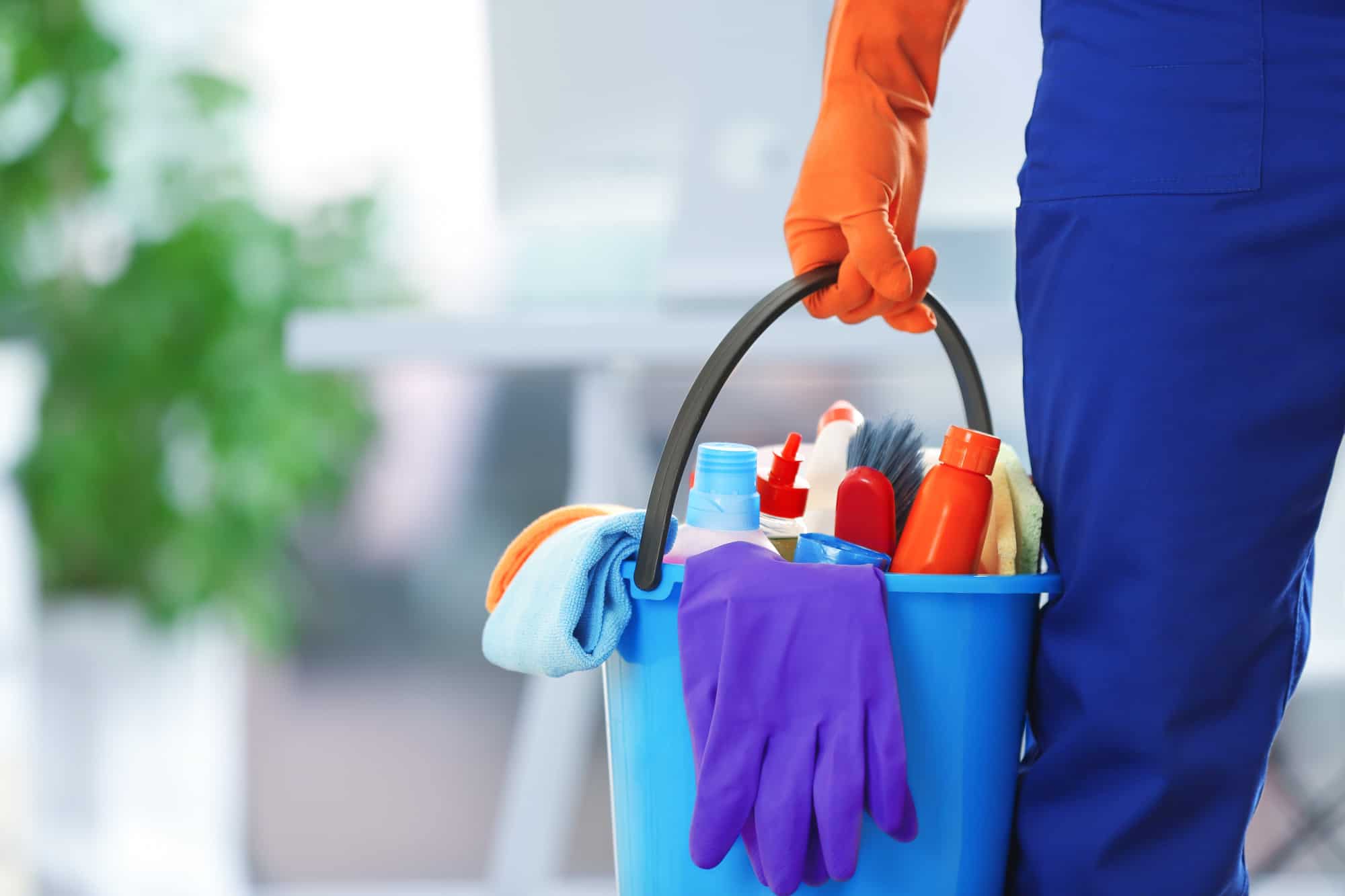What does cleaning your house and your high school chemistry class have in common?
Even the safest cleaning supplies are made out of chemicals. The one thing that chemicals love to do is interact. When chemicals combine, there can be some pretty incredible reactions, but not all of them are good for your health or your home!
Cleaning your house can be a hazard if you are not aware of what cleaning products should never be mixed. Are you using safe cleaning products in your home? If you’re not sure, read on to learn about common reactions that can occur if you are not careful!
Household Chemical Reactions to Avoid
A chemical reaction occurs when substances change at the molecular level. That means that one substance will transform into another substance, often with very different properties. Sometimes, the properties of the new substance are toxic, and that’s when chemical reactions become dangerous.
Bleach and Vinegar
Most homeowners would not think twice about using bleach or vinegar to clean their homes. They are two of the most common products because they are relatively cheap and do their jobs effectively. While they are great individually, bleach and vinegar are very dangerous to humans when combined.
Bleach contains chlorine and vinegar contains acetic acid. The combination of these two elements leads to the creation of chlorine gas.
If you are briefly exposed to chlorine gas, you can expect irritation of the eyes and airways. Longer exposure can lead to much more significant health complications, ranging from chest pains to throat blistering. If you are not in a properly ventilated area, exposure to the substance can even be fatal.
When cleaning your windows, it is best to use bleach and vinegar individually and never combine the two.
Bleach and Rubbing Alcohol
Both bleach and rubbing alcohol have smells that we often associate with cleanliness. They make us think of pristine hospitals and sparkling countertops. When combined, however, they create chloroform, a substance you should not smell under any circumstances!
In addition to chlorine, bleach contains a substance called sodium hypochlorite. When it combines with the isopropyl alcohol or ethanol in rubbing alcohol, chloroform forms.
You might have heard of chloroform because it is frequently used by “bad guys” on television shows and in movies. It can be inhaled or absorbed in the skin, which causes you to pass out. It can also lead to significant organ damage and neurological disorders.
Be aware that rubbing alcohol is an ingredient in many common hand sanitizers. Just because your favorite hand sanitizer smells like berries doesn’t make it any less deadly when combined with bleach. Make sure to wait to use alcohol products after you have used bleach for cleaning.
Hydrogen Peroxide and Vinegar
The combination of vinegar and hydrogen peroxide creates a substance called peracetic acid, which is corrosive. In addition to destroying surfaces in your home, this acid has the ability to destroy your mucus membranes if inhaled. This can cause permanent damage to your esophagus, as well as your nose and mouth.
This combination should never be used for surface cleaning. When diluted, it is occasionally an ingredient in laundry products.
Unless you’re a chemist, it can be hard to keep track of the ways that even the most common household products interact. Bleach produces hydrogen peroxide when combined with water, so if you add vinegar, you are once again dealing with chlorine gas!
If you’re not sure, it may be best to book a local professional house cleaner using Anita’s, the best cleaning service near me in the Santa Cruz area.
Combining Drain Cleaners
Not all drain cleaners are created equal. Many of them have different ingredients, and some of those ingredients are reactive. Using a second drain cleaner soon after using a different brand can lead to reactions that are harmful to your health and your pipes.
Often, the reaction will take place deep within the pipes. This doesn’t give the chemicals anywhere to go but back out again. Often, corrosive chemicals will come spraying out of drains and taps, which can cause damage to the eyes and airways.
If your first drain cleaner doesn’t work, there isn’t any good way to determine whether or not the chemicals are still active and working within your pipes. If you continue to have problems, it’s better to call a professional than to risk causing harm to your family.
Ammonia and Bleach
Ammonia is a natural component in cat urine. If you have a pet cat, you have probably been taught to wash out the litter box completely before you use cleaning products such as bleach. This is for the protection of your family, including your cats and yourself!
The combination of bleach and ammonia creates chloramine vapors. This chemical substance has similar effects to the chlorine gas created when combining bleach and vinegar. If inhaled, it can make you very ill.
It is important to note that both bleach and ammonia can be dangerous even if used separately. You should always use these products in a well-ventilated space because inhalation can cause damage with or without a chemical reaction.
That’s why it’s best to book a professional home cleaning service through Anita’s Housekeeping. The expert service providers we match you with know how to work with the best cleaning products safely.
cleaners who Use Safe Cleaning Products
Even the simplest household cleaning products have the ability to cause harm if combined incorrectly. Sometimes, it’s best to leave it up to the professionals!
If you’re seeking a professional cleaning service in Santa Cruz County, San Diego County, Santa Clara County, or the Monterey area, Anita’s Housekeeping is here to help.
You can request cleaners who provider safe and green cleaning service to keep your family safe and healthy. Request a booking today to see how the professional cleaning can safely transform your home!









